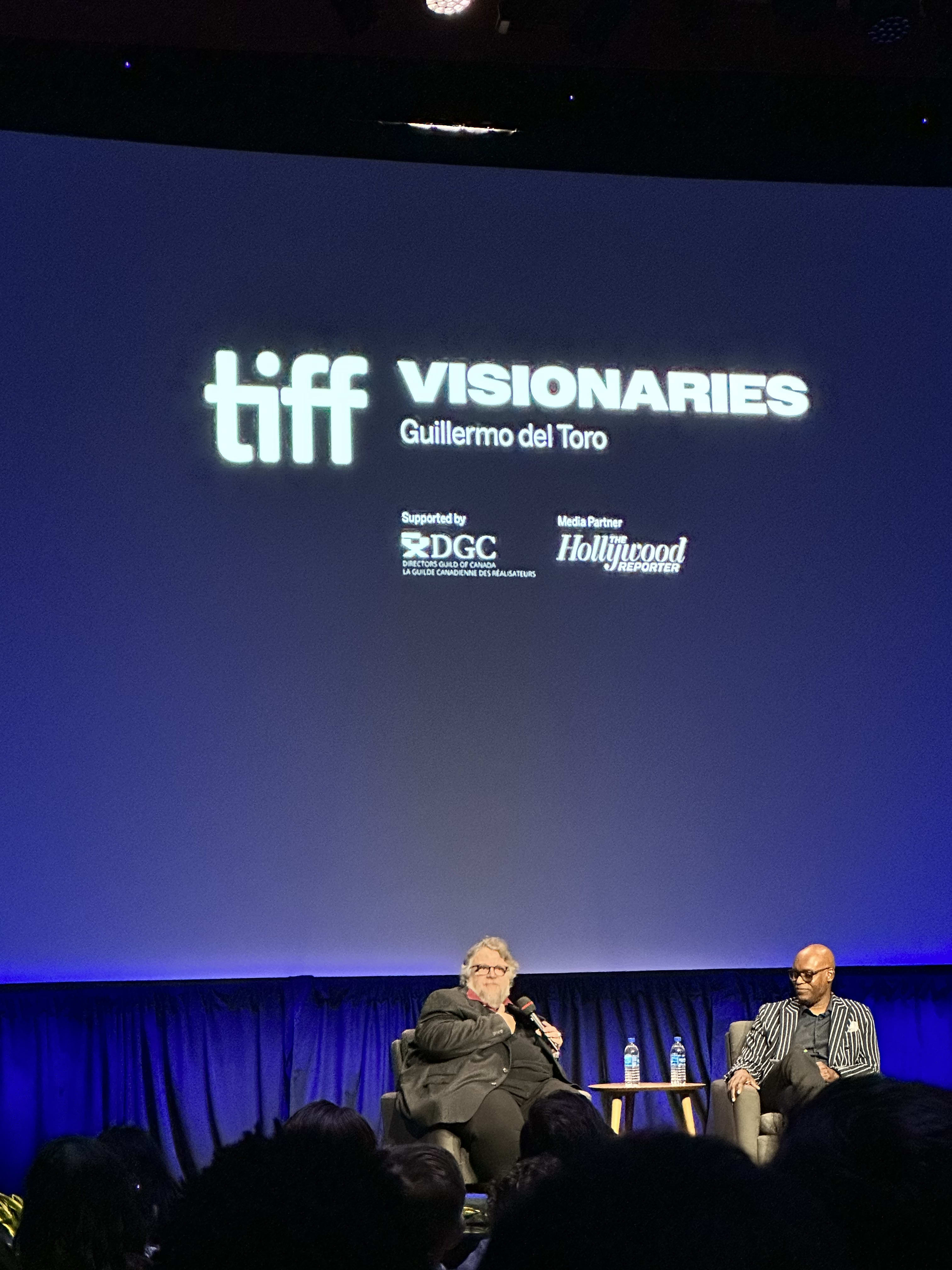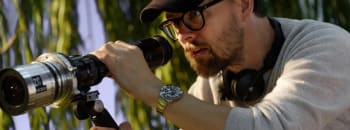Guillermo del Toro on "autobiographical" art of Ghibli and Disney animation
"When you see a movie, you know when the movie was hurting the person that made it and when it’s a conceit."
By Priyanca Rajput 27 Sep 2023

Guillermo del Toro, whose 2022 musical-fantasy Pinocchio received an Academy Award for Best Animated Feature Film in March, delineated the “autobiographical” art of animation behind Studio Ghibli and Disney animation during a VISIONARIES talk at this year's Toronto International Film Festival.
Speaking about the humanisation of animation, the acclaimed Mexican filmmaker began by discussing a key component of his own recent feature, Pinocchio, which highlighted the intimate craft behind stop motion.
"There’s a direct transmission of personality from the animator to the model – stop motion being the most promiscuous of all because its literally one person in one set and a little toy in a toy room, playing and when you see the result, it’s so moving."
Speaking about Studio Ghibli's portfolio of fantastical animation, del Toro expounded on the natural flow of Miyazaki's work.
"Hayao Miyazaki still draws his storyboards by hand, he doesn’t prepare a structure, he lets the movie talk to him. [Referencing The Boy and the Heron] he does have digitally-assisted ‘this or that’ but to me those are tools. When people say ‘are you worried about artificial intelligence?’ I say ‘I’m more worried about natural stupidity’.
"If anyone wants movies made by AI, **** it, let them get it with ease. I don’t care about people that want something sh** quick."
Discussing the relationship between an animator's past and own identity, del Toro noted how Miyazaki's films are "profoundly autobiographical".
"I think the right connection is between your history and your self-portraiture and animation is so intimate. A Miyazaki movie is profoundly self-portrait, profoundly autobiographical. You know that his mother was in hospital, she suffered a spinal disease, he saw the bombing of his city, his father worked for an airplane factory – this gets repeated over and over again in different movies. And you feel that you’re sharing a therapy session with him. And this is the same with me, all of my movies are autobiographical.
"When you see a movie, you know when the movie was hurting the person that made it and when it’s a conceit. When somebody is posing as something and particular to that I think we live in a world which is pregnant with stimulation. Miyazaki's structure responds to his anxiety! All I can say is, let your imperfections hang, be yourself in the art."
Spotlighting Walt Disney, the Shape of Water director noted not only similarities, but an inherent 'rage' in the American pioneer's storytelling devices.
"Disney, who was not a director but a producer, a shaper of stories… all sees rage, all his fears coming from living in Marceline, Missouri and being abused by his father and his fear of orphan burden and poverty -- all of this is in his films."
Asked by the moderator where he sees this 'rage', del Toro clarifies in the ‘violence and fear’. Before recalling he was once having dinner with Quentin Tarantino and he said ‘the most violent movie I’ve ever seen is Bambi… I had to leave the theatre.’
"There’s a structure of profound feeling in those films, and you have to distinguish even [Walt] Disney and animation as the shaper and the entrepreneur, and the shaper of social utopias.
"But I think animation is the closest you get to the id (impulsive part of the mind), but a very very disciplined id because in animation, nothing happens without a will and a craft and this is where I also feel there’s a lot of misunderstanding among filmmakers. We are not only tonally gifted, we are also specialised idiots and we use this in our many fields of social interaction."
Highlighting music as the foremost art form, del Toro noted its integral relationship with film.
"I also believe all arts aspire to a vision of music, because the purest art is music. Film is rhythm and symphonic, and animation has to reproduce both things – rhythm is the plot but symphony is the flow. And as an act of reproduction of reality, it becomes something else, it encapsulates something internal."
Latest news & features
Featured profiles
Promote your services with KFTV
Choose from three profile types - Basic, Silver and Gold
Create ProfileWe offer a range of display advertising opportunities.
Learn More


